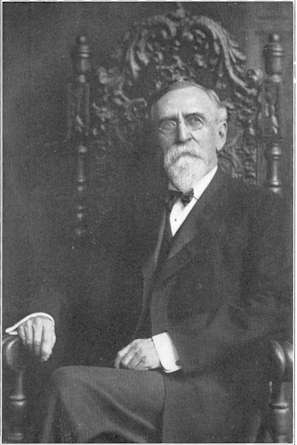 Eugene Beauharnais Nash (8 March 1838 – 6 November 1917) was an American graduate from the Cleveland Homeopathic Hospital in 1874. Nash taught at the New York Homeopathic Medical College, and was the President of the International Hahnemannian Association.
Eugene Beauharnais Nash (8 March 1838 – 6 November 1917) was an American graduate from the Cleveland Homeopathic Hospital in 1874. Nash taught at the New York Homeopathic Medical College, and was the President of the International Hahnemannian Association.
Nash was born in Hillsdale, NY, and studied medicine at an early age under the old apprenticeship system with homeopath Dr. Titus L. Brown (1828 – 1887) in Binghamton, NY.
In 1874 Nash graduated with his MD from Cleveland Homoeopathic Medical College. He set up in practice initially at Triangle, NY, where he met his wife, Euretta Johnson, before settling in Cortland, NY.
When Nash was beginning his medical career he was stricken with paralysis. After considering his symptoms, he decided to take Lachesis, but it only helped a little. Discouraged, he put himself under the care of the great master, Dr. Adolph Lippe.
The venerable doctor gave him a remedy and stated, “When you are cured, come back and then I’ll tell you what I gave.”
Dr. Nash later returned to Philadelphia. “Here I am, entirely well now. What was it?” “Lachesis, Lachesis!”
“Yes, but I took Lachesis!”‘ The old doctor jumped up and down with delight, and laughing, said: “You did not take it high enough.”
This experience along with instruction from Carrol Dunham on the use of his saw-mill 200c potencies gave Nash confidence in the higher potencies.
Nash served for seven years as Professor of Materia Medica in the New York Homeopathic Medical College, and in 1905 taught a series of lectures at the London Homeopathic Hospital.
Nash was one of the most influential American homeopaths, whose books spread far and wide. He was a careful researcher in the laboratory, and he was not afraid to utilise the knowledge of his grandmother, a herbalist, who taught him the value of Yarrow.
He was a member of the American Institute of Homoeopathy, International Hahnemannian Association, New York State Homeopathic Medical Society, an honorary member of the Pennsylvania State Homeopathic Medical Society and an honorary member of the New York Homeopathic Materia Medica Society.
In addition to his medical accomplishments Nash was noted for having “a fine tenor voice” and for over twenty years he “led the singing” at the Cortland First Methodist Sunday School.
Nash lost his sight in his later years and relied on his wife to transcribe his fourth edition of Leaders in Homoeopathic Therapeutics in 1913.
He died in November 1917.
Select Publications:
- Leaders in Homoeopathic Therapeutics (1st ed., 1899).
- Leaders in Typhoid Fever (1900).
- Regional Leaders (1901).
- How to Take the Case and to Find the Similimum (1st ed., 1907).
- Leaders For the Use of Sulphur (1907).
- Leaders in Respiratory Organs (1909).
- The Testimony of the Clinic (1911).


Leave A Comment